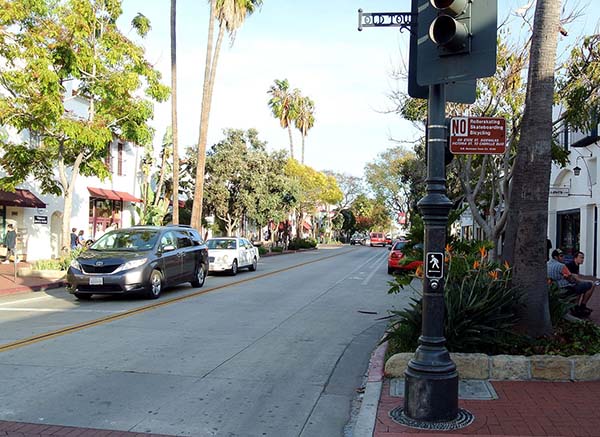
As the alcohol industry chips away at protective regulations on the state level, cities are left to shore up the breaches on the local level. On Tuesday, September 21, the Santa Barbara city council mortared in place a new set of policies designed to do just that. By an overwhelming vote, the council enacted a “deemed approved ordinance,” or DAO, that gives the city the ability to restrict alcohol licenses to stores when there is clear evidence of harming to the community.
The ordinance was pushed by a coalition of local groups concerned with public nuisance in the Milpas area. Along with local residents, student action group Future Leaders of America chimed in to support the new codes, which also target retail practices that promote “impulse buys” of alcohol. Alcohol Justice provided consultation to concerned locals, but the advocacy, testimony, and solution arose completely from within the community.
The plan around increased enforcement included a surprising, and potentially socially significant, caveat. The Future Leaders of America proponents emphasized that they would like to see alcohol enforcement done through the Community Planning Department, not the police. In a city with extraordinarily high levels of wealth inequality, not only would that reduce the burden on the low-income and/or communities of color that suffer inequitably from the costs and consequences of police action, it would center the issue on the businesses who benefit from alcohol sales, not the individuals harmed by alcohol consumption.
The DAO would address numerous quality of life issues in the city, which already has a love-hate relationship with the alcohol industry. As a resort town, hospitality forms a cornerstone of its economy, yet between vacationers and the outsized “party school” reputations of its massively overcrowded local colleges and universities, businesses navigate the constant temptation to promote and profit from dangerous drinking behavior. The ordinance is an attempt to thread that needle, and one that serves as a promising model for other, similarly impacted communities.
“Congratulations to Santa Barbara for making a safe and smart decision,” said Michael Scippa, Public Affairs Director of Alcohol Justice. “We hope other towns and cities look at them and see that by working together, we have the power to draw the line.”
Image used under Creative Commons license.
